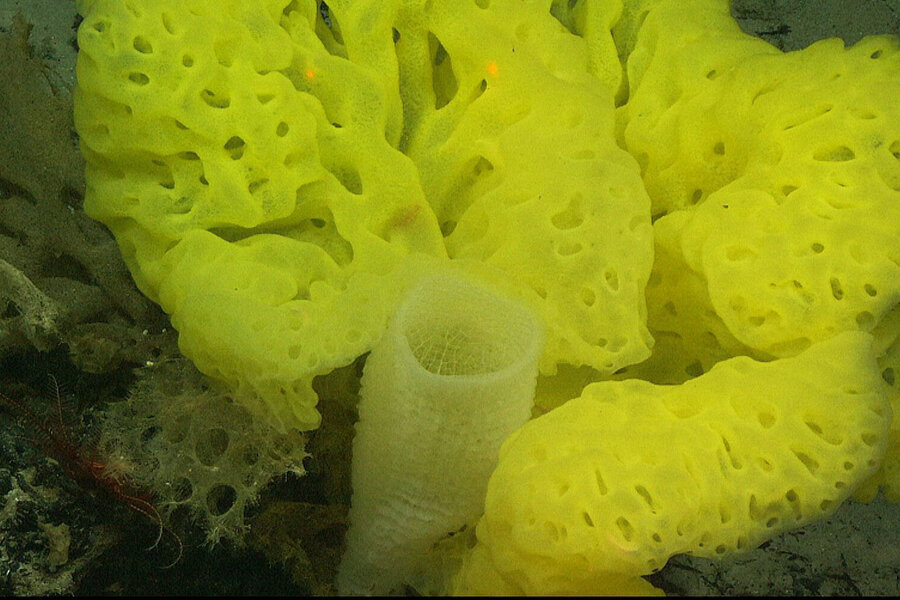Did all animal life on Earth begin with a sea sponge?
Loading...
Scientists estimate that there are about 8.7 million species of animals on Earth – give or take 1.3 million. But in the beginning there could be only one.
That animal was very likely the simple sea sponge, according to a study by researchers at the Massachusetts Institute of Technology in Cambridge.
Based on new genetic tests, the team of scientists can say with confidence that molecules produced by sea sponges have been found in 640-million-year-old rocks. These rocks significantly predate the Cambrian explosion, the period 540 million years ago in which most animal groups took over the planet, suggesting that sea sponges may have been the first animals.
The researchers write in the study, which was published Friday in the Proceedings of the National Academy of Sciences, that their testing provides “the oldest evidence for animal life.”
“We brought together paleontological and genetic evidence to make a pretty strong case that this really is a molecular fossil of sponges,” explains David Gold, a post-doctoral researcher in MIT’s Department of Earth, Atmospheric, and Planetary Sciences (EAPS), in a press release.
Paleontologists have long struggled to determine which type of animal was the first to the evolutionary line. While they have unearthed a large number of fossils from the start of the Cambrian explosion, the fossils that are known from before then are peculiar in many respects.
EAPS Professor Roger Summons has spent more than two decades searching for the animal kingdom’s extended evolutionary tree. His lab has been looking for clues in molecular fossils, trace amounts of molecules that have survived in ancient rocks long after the rest of an animal has decayed.
The so-called “‘sponge biomarker hypothesis” was first hypothesized in 1994 and partially confirmed in 2009. It focuses on 24-isopropylcholestane, a lipid molecule, or sterol, that scientists have found in unusually high amounts in Cambrian and slightly older rocks. Genetic testing by Dr. Gold adds “a further layer of evidence supporting” the theory that sponges or their ancestors might be their source, Dr. Summons said in the release.
The results of the study provide strong evidence that sea sponges appeared on Earth 640 million years ago, much earlier than any other life form.
“This brings up all these new questions: What did these organisms look like? What was the environment like? And why is there this big gap in the fossil record?” Gold says. “This goes to show how much we still don’t know about early animal life, how many discoveries there are left, and how useful, when done properly, these molecular fossils can be to help fill in those gaps.







